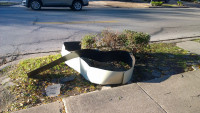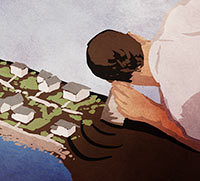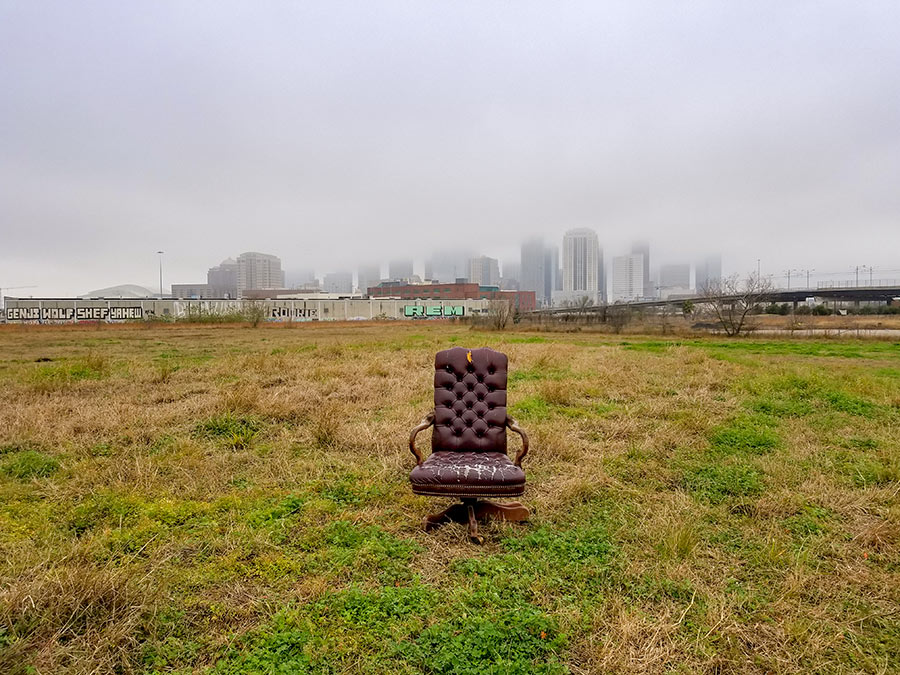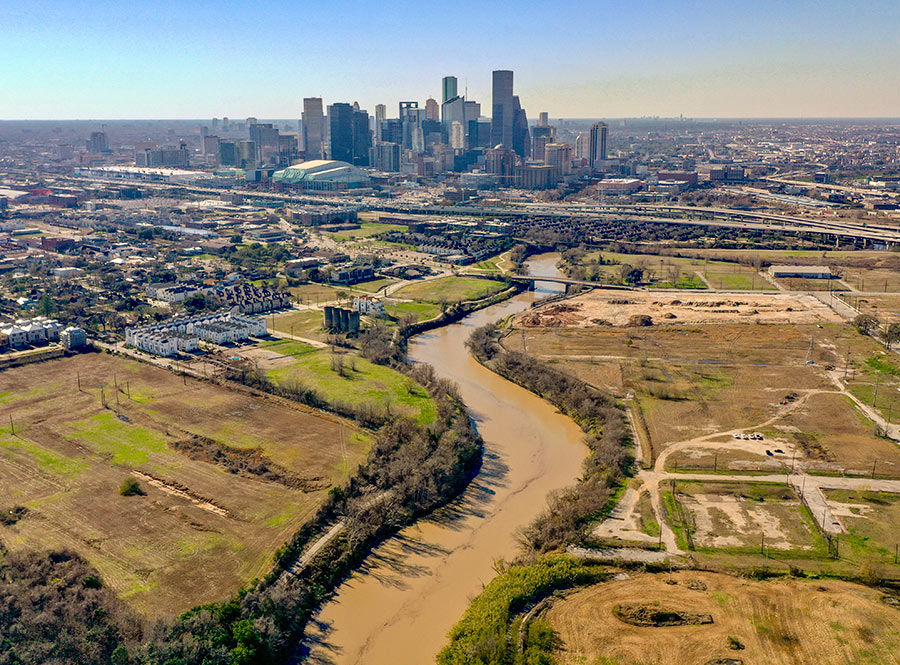COMMENT OF THE DAY: VINTAGE HOUSTON CORNER CUTTING BACK IN VOGUE  “For anyone who lived here through the mid to late 70s through the early 80s, we are all too aware of how things were just thrown up as fast and as cheaply as possible: cracked slabs were de rigueur, flooding issues, aluminum wiring, as well as a whole host of other issues . . . If you don’t think a lot of these same mistakes are being repeated now, you’re probably delusional, especially with all the awful stucco being used near ubiquitously around town — go look at some of the ones built within the last 10 years and you’ll see failing stucco, poor construction, shoddy methods . . . how many townhome collapses do you need to see before you realize this is history repeating itself for a new generation of ‘suckers’?” [cm, commenting on Fatigued Metal Strips Now Jumping From the Top of The Susanne Onto the W. Alabama St. Sidewalk Below] Photo of fallen metal strip on W. Alabama St.: Swamplot inbox
“For anyone who lived here through the mid to late 70s through the early 80s, we are all too aware of how things were just thrown up as fast and as cheaply as possible: cracked slabs were de rigueur, flooding issues, aluminum wiring, as well as a whole host of other issues . . . If you don’t think a lot of these same mistakes are being repeated now, you’re probably delusional, especially with all the awful stucco being used near ubiquitously around town — go look at some of the ones built within the last 10 years and you’ll see failing stucco, poor construction, shoddy methods . . . how many townhome collapses do you need to see before you realize this is history repeating itself for a new generation of ‘suckers’?” [cm, commenting on Fatigued Metal Strips Now Jumping From the Top of The Susanne Onto the W. Alabama St. Sidewalk Below] Photo of fallen metal strip on W. Alabama St.: Swamplot inbox





I’ve never understood the popularity of stucco in Houston, so I’m guessing it must be cheap for developers to install. Unless it’s done PERFECTLY, stucco will eventually fall victim to our humidity and flooding rains. All it takes is one crack for the moisture to get in, then it’s mold city.
An architect friend of mine gave some of the best house-hunting advice when we were buying our first home: Never buy anything built during a boom in Houston.
My favorite Houston bad builder f-up is installing flashings or other window trim that is not galvanized or otherwise treated to withstand moisture. The resulting corrosion bleeds down from the lower corner of the window onto the stucco below to make it appear as if the window had been crying while wearing mascara.
Urban Living, is that you???
It is impossible to do stucco right in Houston as others have said, I haven’t seen a good application yet. My motto: Stucco is yukko. Plus, shady builders paint it white to hide the mold and a whole host of other gotchas that eventually manifest themselves long after any home warranty has run the course. “The Suzanne” problem reminds me of that awful apartment fire from the 31st of July, 1979. The whole place was built poorly and just went up in a smokey blaze. The previous day the City tabled something to do with building code. RIGHT after the fire, the next day in fact, the city passed the ordinance (forgive my fogginess on the details). So I really hope this isn’t a return to that era, I hope it doesn’t take people dying to get this nonsense stopped.
The stucco on my townhouse has lasted 8 years without any issues. I don’t expect it to fall apart any time soon. I have witnessed others who’ve had to have parts of it replaced. Swamplot gets old with the blanket statements that are thrown on here all the time. I give credit to the UL reference — I do not like what they build.
The partial or full stucco homes built in the 1910s and 1920s in Houston seem fine.
If stucco is installed correctly to the correct specifications and control joints installed where they need to be it should be fine. Stucco done correctly is priced out at the same price as brick. I am sure what is prevalent on most buildings is an inferior 2 coat finish or the old EIFS installations. The lack of appropriate weather barriers and maintaining a drainage plane is what leads to mold growth.
Cheap housing = Cheap construction.
Woodway Square appartment fire: I believe the city code was changed to disallow wood shingle roofing
FattyAcid, those homes from the 20’s and 30’s were Portland cement stucco. That stuff was 1/2 to 3/4 thick on metal lathe. The modern synthetic stucco (EIFS) is the one with all the problems because of poor installation. It is so common on new construction because it is cheap.
JCR, EIFS is not used in apartment construction. We all use genuine stucco. StevieB is correct, it currently costs about the same as brick. It fluctuates a bit, but generally the same price. I see very few problems with cracking and leaking. Seems most leaking is flashing and window related.